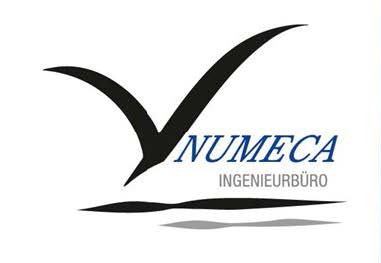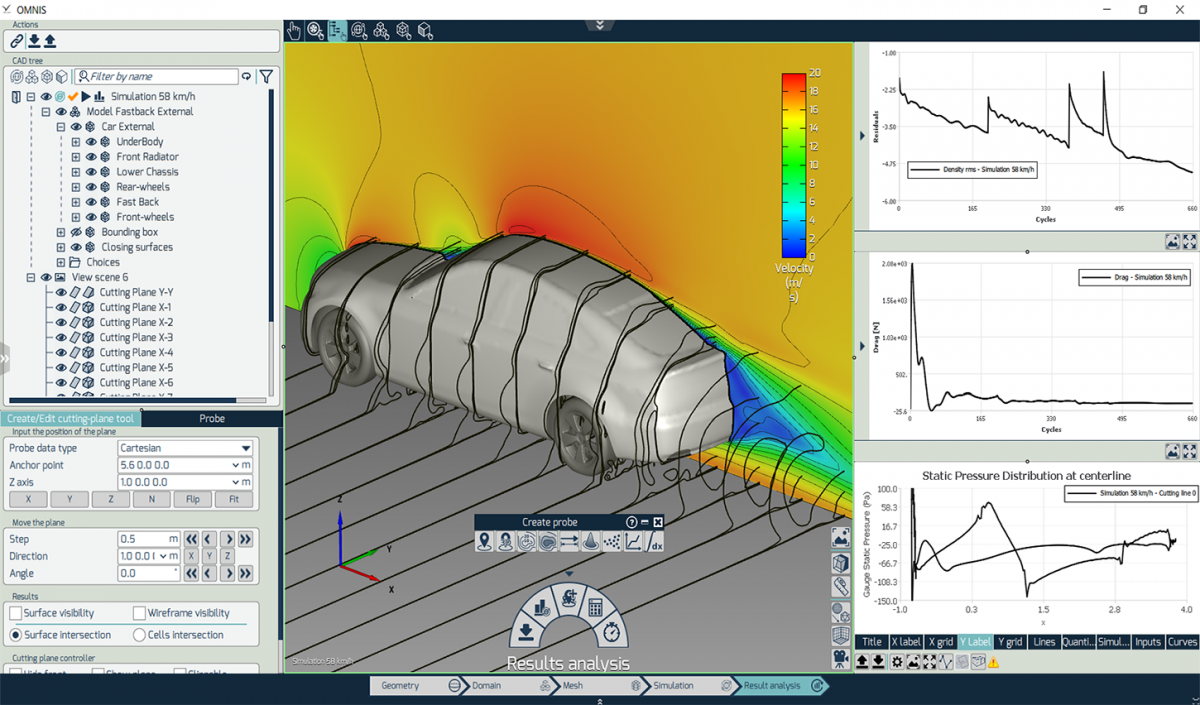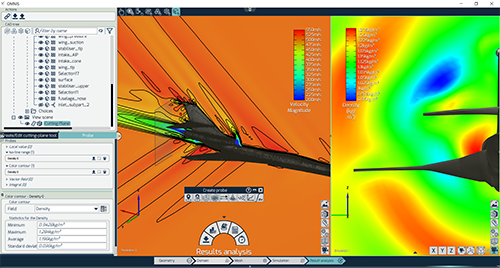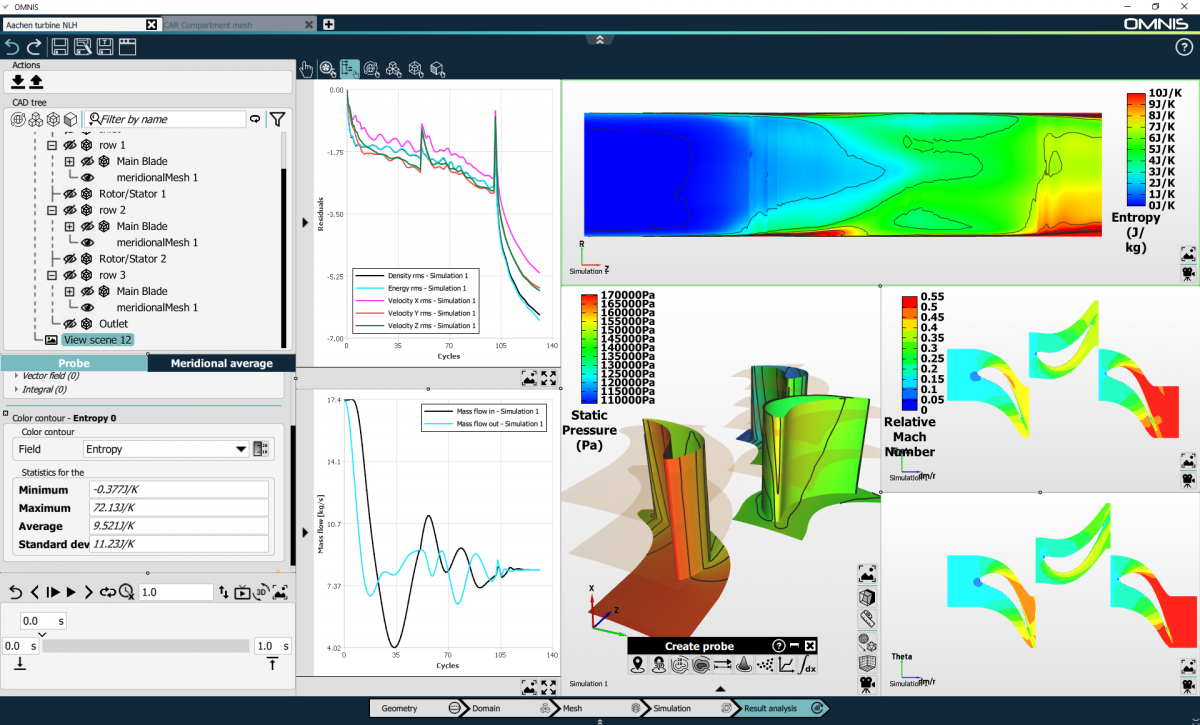High-end graphical analysis and visualisation tools
color contours | iso-lines | vectors | streamlines | cloud of paricles | local values
Comprehensive analysis and visualisation set for all meshing and solver products
The post-processing module enables qualitative and quantitative evaluation as well as the graphical representation of the results of steady and unsteady flow simulation results in 2D and 3D. Both scalar and vectorial quantities can be displayed and further processed.
Supporting special coordinate systems, such as cylindrical, and meridional blade-to-bade, makes it an exceptional evaluation tool. As an example for the analysis of turbomachines circumferential averaging, flattening (blade-to-blade) and cylindrical representations are just a simple click. Simple scriptability via Python makes it easy to automate complex evaluation routines.
Fidelity/Post uses a video game high-end graphical kernel, fully scriptable via a Python API, that is able to treat large datasets using distributed memory computing resources.
With its modern and intuitive user interface, the user can create color contours, iso-lines, vectors, streamlines and many other types of plots from a cell-centred, vertex-based, lattice-based, or particles dataset.
Live co-processing with Fidelity/Post
For complex applications, a static image is not sufficient to fully understand the physics at stake. Therefore Fidelity/Post allows users to:
- Perform live co-processing of running simulations, monitoring solver convergence in real-time
- Render transient plots while the solver is running, thus greatly reducing disk space usage and data processing time.
- Time and space reconstruction from a harmonic solution
Key Features
- Surface and 3D lacal value, color contours, iso-lines, vectors and streamlines
- Cloud of particles
- Formula and operator derived quantities
- Live co-processing
- Highly automatable thanks to the makro recorder, scriptability via Python and batch mode



